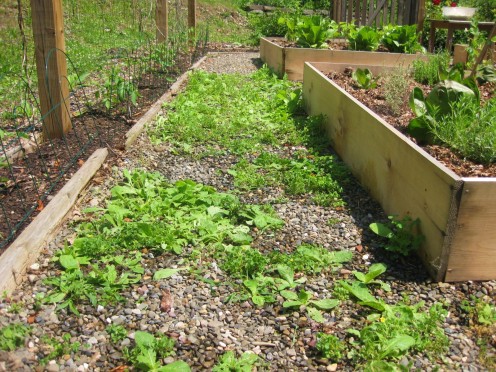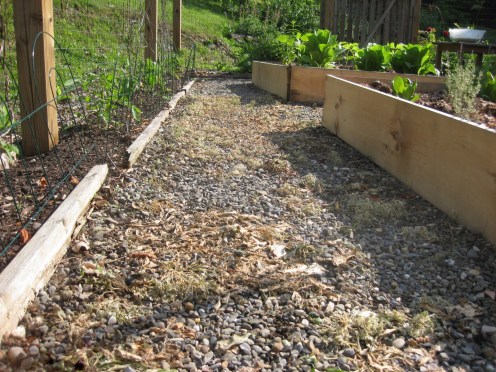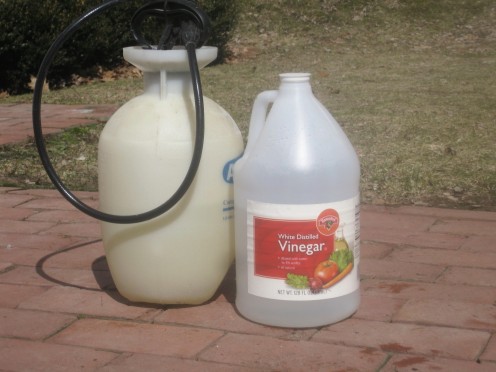Summer Gardening: Weed War 101
Get weeds this summer before they get your garden by following these basic tips.
Summer has its pleasures, but pulling weeds isn’t one of them. And as anybody who has struggled to pull a weed will tell you, these plants are a formidable adversary. They grow almost anywhere, thrive under adverse conditions and can be incredibly prolific. Purdue University’s cooperative extension office reports that a single dandelion can produce 15,000 seeds a year, each of which can survive in a dormant state in the ground for six years.
Weeds respond to different stimuli and different control methods, so the first step in controlling weeds is to identify them and their control method. It sounds odd, but there are many weed photo galleries on the Web, and many universities and state cooperative extension offices have similar reference materials. Once you know your weed, you can research the variety of ways to kill it or slow it down. Here are the most common weapons against weeds.
Pulling Weeds
Yank weeds while they are still young and tender and the roots are not fully developed. This is most effective, and easiest, after a rain when the soil is soft and the moisture ups the odds that you’ll get the top plant and its roots. Dry soil is hard, and it’s far more likely that you won’t get root when you pull the weed. Above all, pull the weed before it starts to flower and goes to seed.
In some cases you may need to dig out a weed with a weeding fork or an old screwdriver. But be careful: This is an easy way to slice off root particles or plant pieces that grow into more weeds.
Cultivation
Stirring the soil severely inhibits a weed’s growth by chopping through it, or killing it by exposing the roots to drying. Again, know your weed. You can kill some weeds with a single chop from a hoe, but If you break up its tuber-like root in an effort to pull it, each piece produces a separate plant.
Mulch
Mulch is good stuff. It holds in soil moisture and shades the soil to prevent weeds’ seed germination. Its porous nature makes it easy to pull weeds that spring up through it. There’s a down side, though. Some mulches, such as free wood chips that cities and towns often provide, can be polluted with weed seed. If you buy hay or straw, ask if it’s free of noxious seeds. Some states have programs in place to certify that the straw is clean. It pays to ask the supplier or your state’s cooperative extension office, which may list suppliers of these certified mulches.
In other cases, wood chip mulch can cause fungi to flourish. Artillery fungus (also called shotgun fungus), will shoot mold spores toward your house or other light-reflecting surfaces, such as your car.
Not all mulches are appropriate for all plants or all locations. There isn’t universal mulch. Large pine bark chips do a good job at suppressing weeds, but they’re a poor choice for windy locations because they can blow out of a bed and fly all over the lawn.
If you do use mulch to help keep weeds at bay, remember that any mulch can mat down and form a crust that prevents rain from soaking in; fluff the mulch with a rake or a fork to prevent this. This also speeds the mulch’s decomposition, improving soil in the process.
The BEST Plan of Attack…..
Got Weeds? Use Vinegar, Not Roundup
NEED PROOF THAT VINEGAR IS A WEED-TERMINATOR? Just look at the weeds growing along a pea-stone path in my Herb Garden. These were photographed yesterday afternoon, just moments before I sprayed them with cheap, undiluted, store-brand white vinegar. Here’s what all that greenery looked like this morning:
I’d say those weeds are deader than dead. And that’s why I use vinegar on the gravel paths, brick walk-ways, and stone patio here at A Garden for the House. For me it has proven an effective, eco-friendly answer to Roundup.
And speaking of Roundup, this year Monsanto, the product’s evil manufacturer, agreed with the New York Attorney General’s office to discontinue their use of the terms “biodegradable” and “environmentally friendly” in ads promoting Roundup. Why? Because these terms were bald-faced lies. Roundup is neither biodegradable nor environmentally friendly.
The next time you want to murder your weeds, why douse them with something that will remain in the soil for who knows how long? Maybe you should reach for vinegar instead. Vinegar is cheap. It’s easy to use. I keep gallons of it in my garden shed.
How to Apply: You can use a watering can, a spray bottle or a pump-sprayer to apply vinegar. I use a pump-sprayer, because it is more efficient. Be sure to rinse your sprayer after use, or metal parts (if any) can corrode.
Make your application on a sunny, calm (not windy) day. Vinegar is not selective; use caution when applying to weeds which grow in lawn grass or near ornamentals or vegetables. I use vinegar primarily for paths and patio, where lawn is not an issue.




Talking about round up…. In Sweden, where I am from, you can only use it if you have a special certificate and if you are a farmer. So, it is against the law to use it in private gardens since it is so harmful to nature.
Something to think about….
Gisela